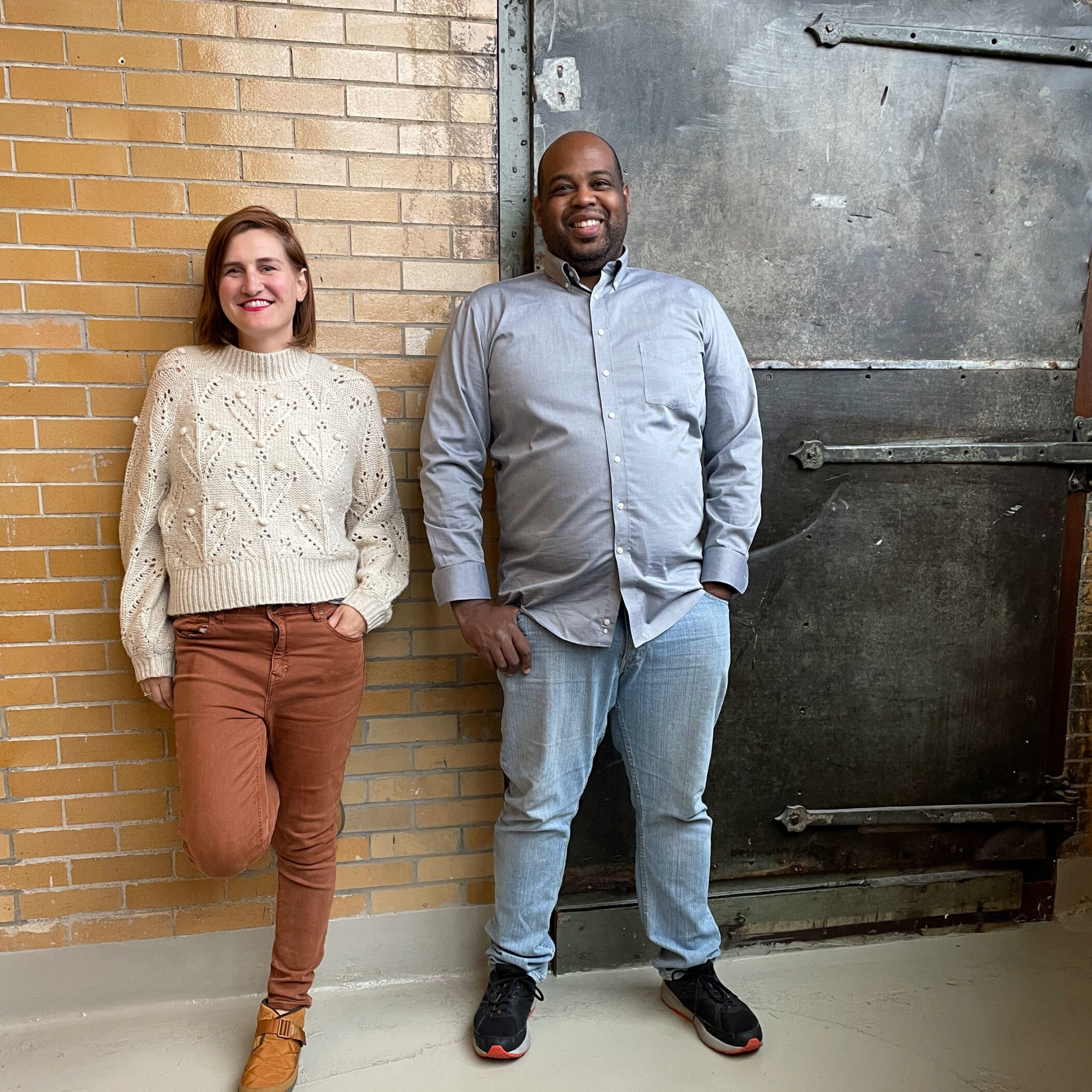Advocating for the Future of Public Transit in Cleveland
Sustainable Community Associates recently welcomed Angie Schmitt and Marvin Ranaldson to an office space on the ground floor of the Fairmont Creamery.
The move was rather serendipitous. “We had found an office downtown, but this came up and it all came together.” Angie explained. The space was vacated by SCA, when we moved to a larger space within the Creamery to accommodate our growing team.

Angie and Marvin, however, do not work directly with one another—at least not with regards to their day jobs.
Angie launched her independent consultancy, 3MPH Planning and Consulting, about a year ago. Her consultancy focuses on planning work, advocacy, and communications. She is currently working with two Northern Michigan cities to address pedestrian safety issues and developing a mobility plan for Ohio City. She also does public speaking events, many of which carry forward issues and themes addressed in her 2020 book Right of Way: Race, Class and the Silent Crisis of Pedestrian Deaths in America.
The book, which focuses on the problem of skyrocketing pedestrian deaths in the United States, was hailed as a thoughtful, comprehensive examination of a national public health crisis and a practical argument for how this crisis might be addressed. It was marked as a top urban planning book for 2020 by Planetizen, who wrote in their review: “Schmitt is one of the very best contemporary journalist-advocates writing on the built environment, whose skills are most obvious when digging beneath the numbers to tell the stories of humanity, not only to the illuminating the faces and lives of the departed, but also to the specific design and political failures that allow this carnage to continue unabated.”
Marvin is a transportation planner working for Nelson\Nygaard, an international firm committed to developing transportation systems that promote vibrant, sustainable, and accessible communities. He specializes in public transit, including buses, trains, and ferries. A Cleveland native, he has worked with numerous organizations based in Ohio, including Bike Cleveland, All Aboard Ohio, and Clevelanders for Public Transit. Often, his focus is on developing methods that improve access to quality transportation options for underserved communities.
He is also involved in the City of Cleveland’s Vision Zero Action Plan, a yearlong endeavor that looks to eliminate serious injuries and deaths from crashes on Cleveland roads through clear, measurable strategies to provide safe, healthy, and equitable mobility for all. In an article on the plan for Cleveland.com, Steve Litt explained that a portion of the plan is dedicated to traffic calming, which “can include widening sidewalks, creating protected bike lanes, and narrowing traffic lanes, and turning radii at intersections,” and that the task force will devise specific recommendations for high-crash areas in Greater Cleveland as well as more general, citywide recommendations.
The pair were originally brought together a decade ago when their advocacy work crossed paths during the development of the Opportunity Corridor project. An Ohio Department of Transportation initiative, the Opportunity Corridor runs from East 55th Street at Interstate 490 to East 105th Street in University Circle. The goal of the project was to reinvigorate this neighborhood and to inspire economic development. While that particular project hasn’t yielded all that they had advocated for, there were some successes—and, beyond that individual project, there have been other exciting developments in the city in the last ten years.
“The Healthline was a pioneering project at the time it was unveiled,” Angie said, referring to the popular RTA line that runs from Public Square in Downtown Cleveland to the Louis Stokes Station at Windermere in East Cleveland. The line runs on Euclid Avenue, passing Playhouse Square, Cleveland State University, the Cleveland Clinic’s Main Campus, University Hospitals, John Hay High School, and Case Western Reserve University. It also provides easy access to popular destinations, including the arts and cultural institutions of University City and the Little Italy neighborhood.
Marvin continued, “The NEXT GEN project launched earlier this year by the RTA was a good first step, too.” This initiative focused on increasing the frequency of buses along popular routes during the week to reduce wait times as well as improving connectivity across the region by adding more one-seat trips and cross-town routes.
Angie agreed, adding, “And there are a lot of new trails for cyclists that are connecting neighborhoods and hubs.”
And while they both consider Cleveland’s public transit system to be the best in the state, they agree that there is still a long way to go.
“Our current system awards drivers, but the reality is that 7% of households in Ohio don’t have a car and the state allots only 2% of its budget to transit. These are anti-urban policies, and they punish cities.” Marvin explained.
“Transit just hasn’t been a priority in Cleveland,” Angie added. “Not in our administrations or foundations. Our work collectively is to create a little space for it—to focus on what’s important for the future of our city.”
Marvin chimed in, “Did you know driving is the number one killer of children in our country?”
In Cleveland specifically, our roadways average thirteen serious injuries or deaths every two weeks.
Angie nodded, “We’ve got to carve out a space for alternatives to driving alone.”
For more information on public transit options in the city, SCA residents can visit Greater Cleveland RTA online or find resources for cyclists in the city at Bike Cleveland.
